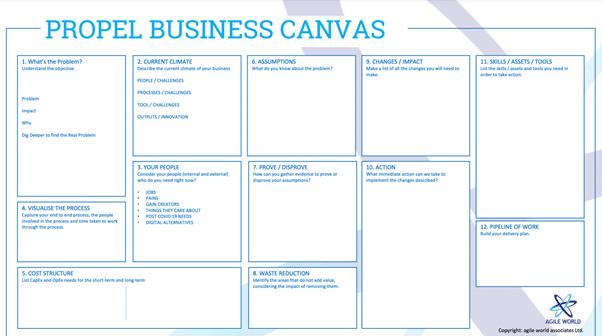Ideas and tools to work with The Dynamic Loop Method
How can we consciously manage our L&D program stakeholders in order to maximize the impact and business success of our initiatives?
Think Beyond Impact Partner Araceli Higueras draws from her rich experience in that field.
Find in this article:
The Dynamic Loop Method
The Dynamic Loop Method proposes employee and organizational development programs that are:
- Flexible and long term
- they look after the long term employee goals and
- react to the short term business goals
- Digital and analog
- Quick and widespread with digital delivery
- Group-based
- Dynamic and regular
- Evaluated quarterly
- with adaptation loops
In phase 1 which is the goal phase, time effectiveness and transfer efficiency are ensured by articulating clearly the business needs, onboarding all the relevant stakeholders, setting short, medium and long term transfer goals and identifying the business impact that we are after, via:
- identifying stakeholder expectations
- identifying success critical behaviors (behavior that needs to be demonstrated to achieve the goals),
- plan for using learner-centered feedback sheets and
- defining leading indicators.
The transparency in this phase is key to success, it allows the program to address what’s most meaningful to each stakeholder. Address means: first identifying and next integrating into the program what each stakeholder values.
All project inceptions kick-off by identifying the stakeholders. The second step is engaging with them and convincing them. The third is engaging them in this co-creative design phase, their input is a key success factor.
In the following, find inspirational thoughts, tools and things to keep in mind for efficient stakeholder management in your development programs.
Step 1: Identification of stakeholders
In order to identify all relevant stakeholders there is a “basic” list that we can start with:
- Human resource
- Business leaders from relevant departments: sales, operations, customer services (support, training), finance and admin, product, technology, marketing
- Partner organizations
- Development suppliers and
- Employee representatives from the relevant departments
The success of all projects hinges on this step. However, the more important the program the more critical this step is. So take the time to identify all the stakeholders of your critical projects.
Look at this figure from Assist Knowledge Development: They suggest you also take into account the potential role in the project of competitors, suppliers and regulators. This might add a sophistication factor when it comes to managing confidentiality and discussing the project in two separate forums, but their input could be vital.

They suggest a very useful stakeholder analysis tool: a grid with the two axes power/influence and interest.

In this grid stakeholders are compared to each other and managed individually. The allocated position of a stakeholder (NB: it can change throughout the lifecycle of the project, so assess regularly) informs the management strategy to be used with them.

Suggested stakeholder management strategies range from ignoring some stakeholders to very actively managing them. Don’t forget about keeping some of them informed, keeping watch on others and ensuring they are satisfied.
Step 2: Engagement with stakeholders
Those stakeholders we need to interact with actively will be part of individual meetings, part of workshops, or we will elicit their perspectives with questionnaires – at the beginning, as well as in each loop phase.
In order to preserve transparency across stakeholders, whenever possible workshops are preferred.
When it comes to tools, have a look at the Business Propel Canvas methodology, it has a laser focus on maximizing value and staying on top of the budget.
Download here.
See a training session here.

Dedicate a workshop to work through its quadrants and in this workshop you will understand:
- What you are trying to solve
- The impact that you are after
- The current circumstances
- The resources/people available
- Their skills
- The assumptions
- The actions that you will need to take towards success
- The end state.
Ideally, you want to encourage each participant to think for themselves and not be “swallowed” by the group’s voice. Remember, if you don’t hear from each participant, you miss out on their perspective.
Step 3: Design the program
Choose the content, the learning objectives, articulate the desired new behavior, find those indicators that will let you know that you have achieved the goals of the program. Remember that learning takes time: give participants the chance to practice and embed their knowledge into their real life. Repetition and feedback are your friends.
For inspiration around program designing read our Dynamic Loop Method Whitepaper. As well as the articles from Jason Durkee and Sotiris Karagiannis.
Pitfalls of stakeholder involvement & the art of leadership – 3 ideas
What happens often? There is an overall lack of alignment among stakeholders. Each individual or group has its own priorities and goals, pressures and challenges, and the group ends up operating like a dysfunctional team.
They may hide information from each other, not take the actions they commit to, or outright sabotage the project.
Idea 1: Lead with a vision
One of the roles of a leader is to clarify and communicate a vision. In this context, there is always an underlying and fundamental reason for the employee or leadership development initiative.
The leader must communicate this “why” and bring everyone along, while their perspectives are heard and acknowledged. Even if they clash slightly with the goal. Perspectives can be integrated into the end result vision, making it easier for everyone to perceive the vision as a team goal. Do not allow them to derail and obstruct the process.
Clear and open communication, active listening, solution-focused co-creative dynamics in teams and groups that think globally and systemically are the successful way forward.
Self-serving individuals, experts at posing and enhancing their self-image while undermining colleagues and never supporting anything that is not in their direct benefit are red flags in my experience. They can be the rotten apple in the organizational basket.
Idea 2: Use visibility & accountability
Stakeholder management needs to be done frequently, candidly and with empathy. But also with authority. The outcomes of the communication should ideally be visible, with project charters or similar.
Make the most of visibility and accountability, I suggest you display publicly:
- The goals and the impact of achieving the goals
- The actions, their owners and status
- Milestones and successes towards the goal
I also suggest that you nurture the key project team, stimulating a good relationship and trust. Don’t forget to celebrate progress and successes. It will provide a motivating feedback loop towards the future. This would be part of the reward and discipline role that I expect from the leaders of the organization, it fosters teamwork.
Idea 3: Transactional meets transformational
Leadership when managing stakeholders needs to swing between a transactional style and a transformational style.
At the transactional end, sometimes leaders may need to instruct and set the pace. However, as soon as you want to benefit from your team’s thinking, you need to use a more participative or even coaching style.
With the right confidence in the team, a leader could adopt a visionary style, limiting themselves to communicate the vision and the why, allowing the team to figure out the how.
In the British Army Leadership Code you can find this statement: “Research has shown that the most effective leaders regularly use at least four of these styles.” Develop your styles and learn to flex in and out of each one of them at will, depending on the circumstances.
So, how to meet the learners’ or the stakeholders’ expectations with your development initiative?
I am going to take the easy way forward here: by asking them. By stating at the beginning of the implementation the objectives of the program and monitoring their progress. Governance is key. Afterward, there might be adaptations left to do but you will be where you had set to go.
As Benjamin Franklin already said:
“If You Fail to Plan, You Are Planning to Fail”
Development programs are like all projects: they benefit from good kick-off hygiene. We can only purposefully meet the business needs if we have expressed them, found a way of measuring them and are actively monitoring progress towards them.
Meet the author

Araceli is a multilingual, twice accredited business analyst (by the BCS—diploma in 2013—and the IIBA—CCBA in 2017) and an accredited executive coach (at the end of 2008) with a strong background in training, financial data modeling, user experience design (also accredited), software product development and, recently, operations. She is very keen on systems thinking.
Also, as a member of employee network leadership teams, Araceli has led many diversity and inclusion events, career development workshops and represented my company at the time in external events and committees in London.
Araceli has lived in 4 countries and fluently speaks 5 languages, plus 1 at an intermediate level.






